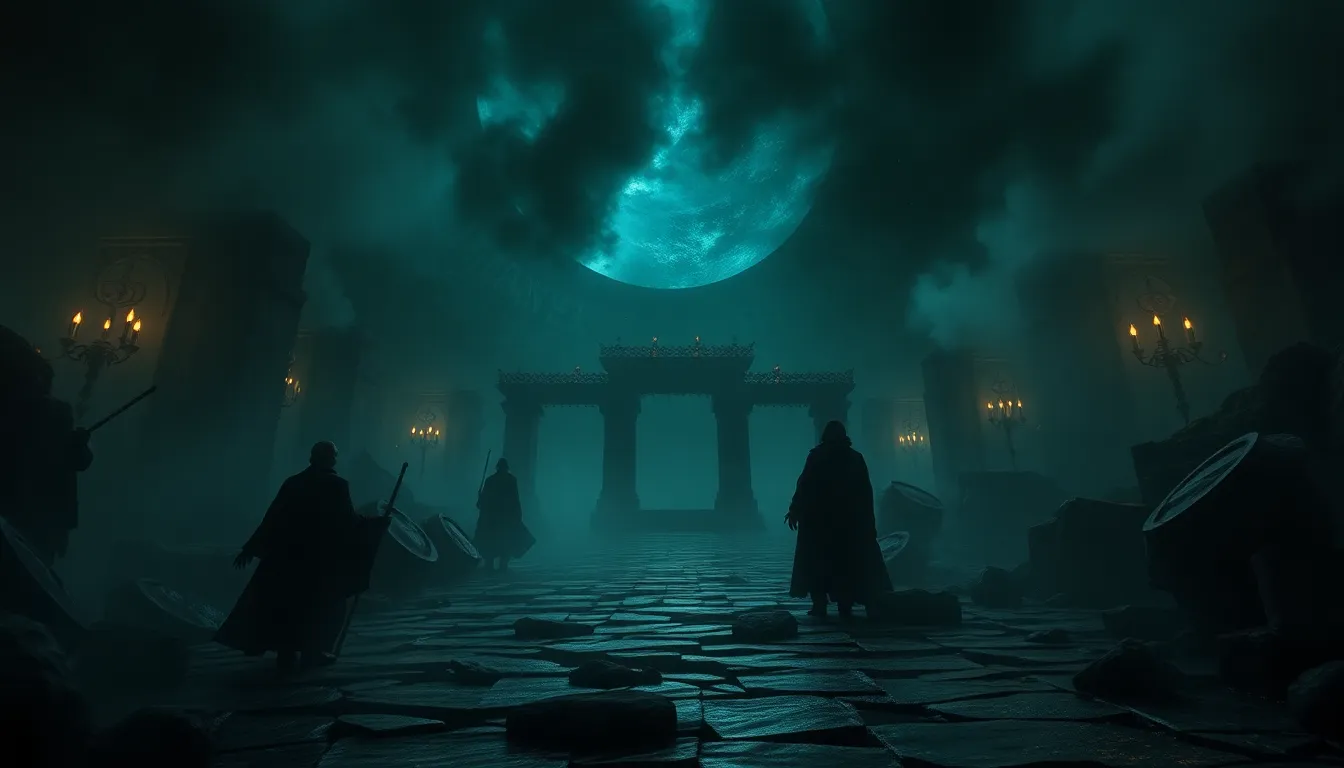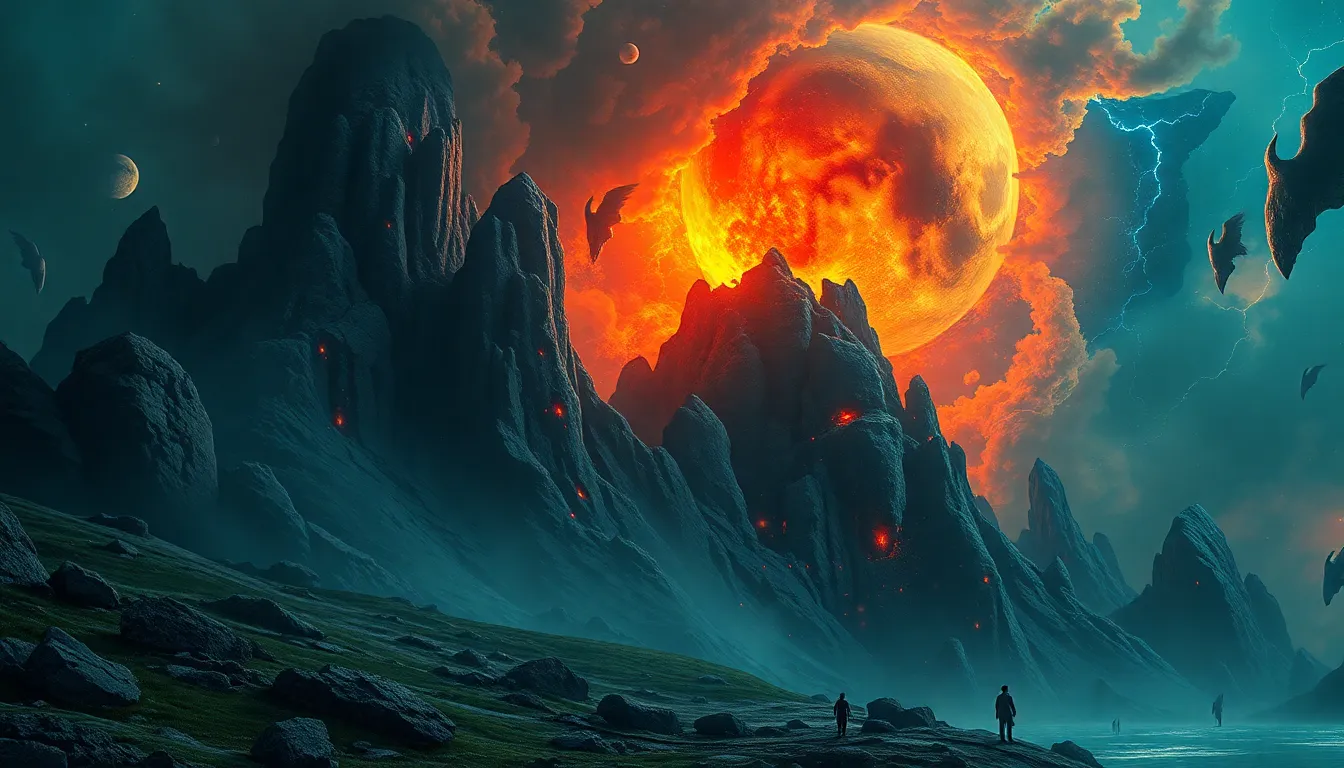Underworld Myths: The Dark Tales That Shape Our Beliefs
I. Introduction to Underworld Myths
Underworld myths are narratives that explore the realm of the dead, often populated by spirits, deities, and the souls of the deceased. These myths play a crucial role in shaping cultural beliefs about death, the afterlife, and moral conduct. They serve not only as stories to entertain but also as frameworks through which societies understand the profound mysteries of existence.
Common themes in underworld myths include the journey of the soul, trials faced by the deceased, and the moral consequences of one’s actions in life. These tales reflect humanity’s innate curiosity about what lies beyond death and serve to impart lessons on ethics and morality. This article aims to explore how these ancient narratives continue to influence modern beliefs and societal constructs.
II. Historical Context of Underworld Myths
The origins of underworld myths can be traced back to ancient civilizations, where they were often intertwined with religious beliefs and practices. In ancient Egypt, for example, the concept of the afterlife was central to their culture, leading to elaborate burial practices aimed at ensuring a safe passage to the underworld.
Comparing underworld concepts across different cultures reveals both similarities and differences:
- Greek Mythology: The underworld is ruled by Hades, where souls are judged and sent to various realms based on their earthly deeds.
- Egyptian Mythology: Osiris presides over the afterlife, where the heart of the deceased is weighed against the feather of Ma’at to determine their fate.
- Mesopotamian Mythology: The underworld, known as Kur, is a dreary place where all souls reside, regardless of their actions in life.
Over time, the narratives surrounding these underworlds have evolved, influenced by societal changes, religious reforms, and philosophical thought, reflecting the shifting attitudes towards death and the afterlife.
III. Key Figures and Deities of the Underworld
Prominent deities associated with the underworld serve as embodiments of human fears and societal values. Notable figures include:
- Hades: The Greek god of the underworld, often depicted as a stern but fair ruler who ensures that souls receive their due.
- Osiris: The Egyptian god of the afterlife, symbolizing resurrection and eternal life.
- Yama: In Hindu mythology, Yama is the god of death who guides souls to their afterlife based on their karma.
These figures reflect the cultural values of their civilizations, addressing fears of death, the unknown, and the moral implications of human actions.
IV. The Journey to the Underworld
The journey to the underworld is a common motif across many myths, often characterized by trials and guidance. Noteworthy elements include:
- Trials: Many heroes must face challenges or obstacles as they descend into the underworld, symbolizing personal growth or the confrontation of fears.
- Guides: Deities or mythical beings often accompany souls on their journey, providing wisdom and assistance.
This journey frequently symbolizes the themes of death and rebirth, illustrating the transformative process that accompanies the end of life. Psychologically, these narratives serve as metaphors for the human experience, allowing individuals to grapple with the concept of mortality and the unknown.
V. Underworld Myths and Moral Lessons
Underworld tales often impart moral lessons, teaching societies about ethics and justice. For instance, the story of Orpheus and Eurydice highlights themes of love, loss, and the consequences of defiance against divine laws.
Specific myths convey important moral implications:
- Orpheus and Eurydice: The tale cautions against disobedience and the inability to let go of the past.
- The Judgement of Souls: Many cultures emphasize that one’s actions in life dictate their fate in the afterlife, reinforcing the importance of moral behavior.
These narratives shape cultural beliefs about justice and the nature of the afterlife, fostering a sense of accountability in individuals.
VI. The Underworld in Modern Literature and Media
Ancient underworld myths have had a profound impact on contemporary storytelling, influencing various forms of literature, film, and art. Modern adaptations often reinterpret these tales, making them accessible to new audiences.
Examples include:
- Books: Works like “The Lovely Bones” explore the afterlife through a personal narrative, drawing on underworld themes.
- Films: Movies such as “Hercules” and “What Dreams May Come” creatively depict journeys through the afterlife.
- Art: Artists often draw inspiration from underworld myths, using symbolism to explore themes of death and rebirth.
These adaptations continue to shape contemporary beliefs and perceptions of death, often blending traditional narratives with modern existential questions.
VII. Psychological Perspectives on Underworld Myths
From a psychological standpoint, underworld myths resonate deeply with human emotions regarding fear and the unknown. They provide frameworks for coping with mortality and existential dread.
Jungian archetypes, such as the hero’s journey, are prevalent in these narratives, representing the universal human experience of facing adversity and transformation. The underworld serves as a metaphor for the unconscious, where individuals confront their deepest fears and desires.
VIII. The Underworld in Religion and Spirituality
Various religions interpret the concept of the underworld through their own doctrines, often linking it to spiritual practices and beliefs about the afterlife.
Connection between underworld myths and spiritual practices includes:
- Rituals surrounding death, such as funerary rites aimed at ensuring safe passage to the afterlife.
- Beliefs in reincarnation or redemption, influencing how adherents live their lives.
These narratives profoundly impact how cultures view death and the afterlife, shaping rituals and spiritual beliefs.
IX. Cultural Variations and Unique Myths
While many underworld myths share common elements, there are unique tales that reflect the diversity of human experience. For example:
- Greek Mythology: The story of Persephone’s abduction highlights the seasonal cycle of life and death.
- Japanese Mythology: Yomi, the land of the dead, reflects cultural beliefs about purification and the afterlife.
- Native American Mythology: Stories of the afterlife often emphasize harmony with nature and ancestral guidance.
These myths illustrate how geography and cultural context shape beliefs about the underworld, providing rich insight into the human psyche and societal values.



